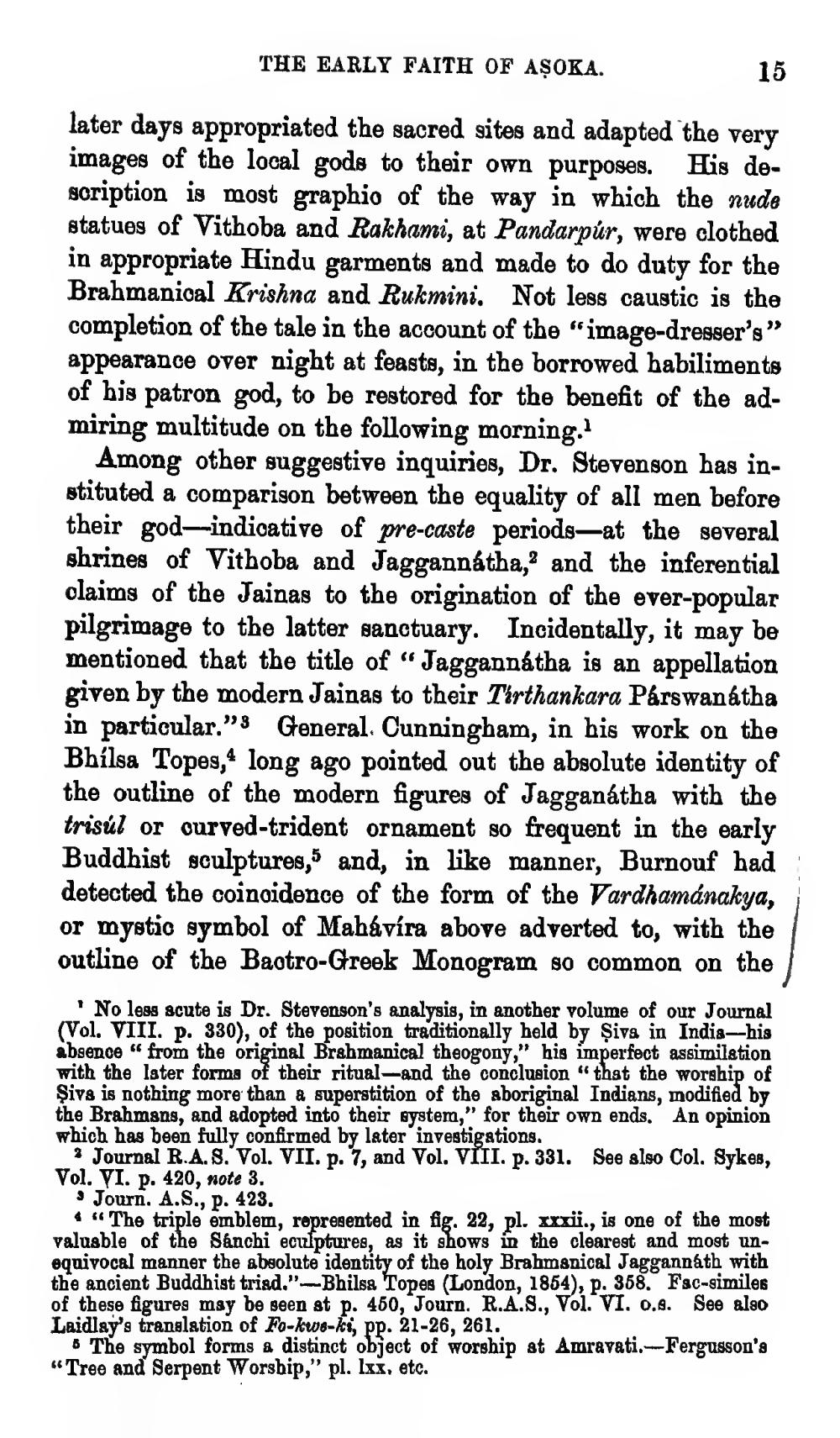________________
THE EARLY FAITH OF ASOKA.
later days appropriated the sacred sites and adapted the very images of the local gods to their own purposes. His description is most graphio of the way in which the nude statues of Vithoba and Rakhami, at Pandarpúr, were clothed in appropriate Hindu garments and made to do duty for the Brahmanical Krishna and Rukmini. Not less caustic is the completion of the tale in the account of the "image-dresser's' appearance over night at feasts, in the borrowed habiliments of his patron god, to be restored for the benefit of the admiring multitude on the following morning.1
Among other suggestive inquiries, Dr. Stevenson has instituted a comparison between the equality of all men before their god-indicative of pre-caste periods-at the several shrines of Vithoba and Jaggannátha,' and the inferential claims of the Jainas to the origination of the ever-popular pilgrimage to the latter sanctuary. Incidentally, it may be mentioned that the title of " Jaggannátha is an appellation given by the modern Jainas to their Tirthankara Párswanatha in particular."3 General. Cunningham, in his work on the Bhílsa Topes, long ago pointed out the absolute identity of the outline of the modern figures of Jagganátha with the trisúl or curved-trident ornament so frequent in the early Buddhist sculptures,5 and, in like manner, Burnouf had detected the coincidence of the form of the Vardhamánakya, or mystic symbol of Mahávíra above adverted to, with the outline of the Baotro-Greek Monogram so common on the
15
در
No less acute is Dr. Stevenson's analysis, in another volume of our Journal (Vol. VIII. p. 330), of the position traditionally held by Siva in India-his absence "from the original Brahmanical theogony," his imperfect assimilation with the later forms of their ritual-and the conclusion "that the worship of Şiva is nothing more than a superstition of the aboriginal Indians, modified by the Brahmans, and adopted into their system," for their own ends. An opinion which has been fully confirmed by later investigations.
Journal R.A. S. Vol. VII. p. 7, and Vol. VIII. p. 331. See also Col. Sykes, Vol. VI. p. 420, note 3.
Journ. A.S., p. 423.
"The triple emblem, represented in fig. 22, pl. xxxii., is one of the most valuable of the Sánchi eculptures, as it shows in the clearest and most unequivocal manner the absolute identity of the holy Brahmanical Jaggannath with the ancient Buddhist triad."-Bhilsa Topes (London, 1854), p. 358. Fac-similes of these figures may be seen at p. 450, Journ. R.A.S., Vol. VI. 0.9. See also Laidlay's translation of Fo-kwa-ki, pp. 21-26, 261.
The symbol forms a distinct object of worship at Amravati.-Fergusson's "Tree and Serpent Worship," pl. lxx, etc.




